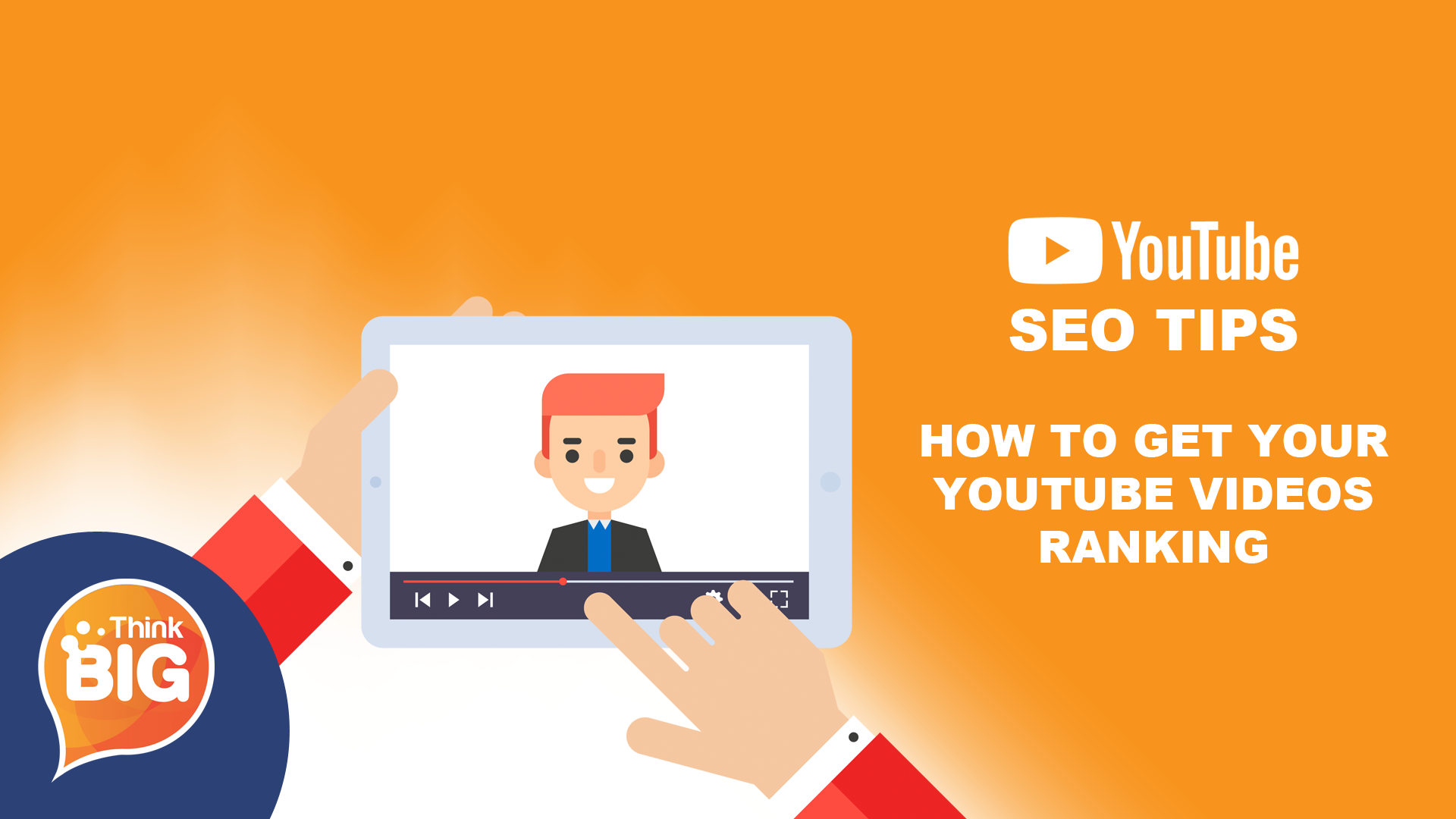
Are you struggling to get your videos ranking on the second biggest search engine after Google?
These YouTube SEO tips will help you increase the number of traffic & views, and get more subscribers.

YouTube SEO Best Practices #1 – Optimizing Videos
Title
The process of YouTube SEO starts with keyword research, i.e. the words that will comprise your video title.
Your video’s title is the first thing that users see and the crucial factor that affects your CTR (click-through rate).
First, think of what your video is about. The title should match the video’s content in order to be appealing to both the users and the YouTube SEO algorithm.
Next, type a word or phrase that describes your video’s topic in Google’s or YouTube’s search tab. Both search engines have search suggest features that provide an overview of what people are searching for. These are your best keyword ideas.
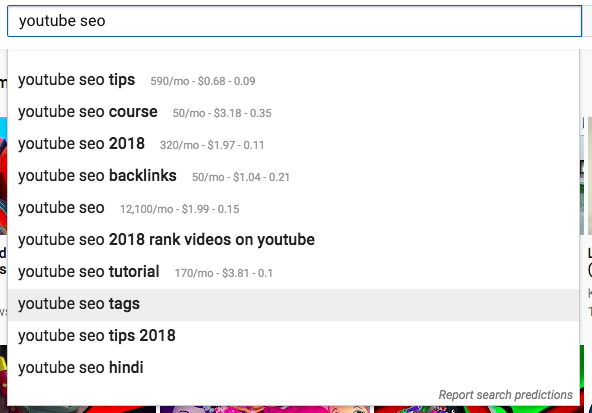

Another option is to steal some ideas from popular videos in your niche or to use tools like KeywordTool.
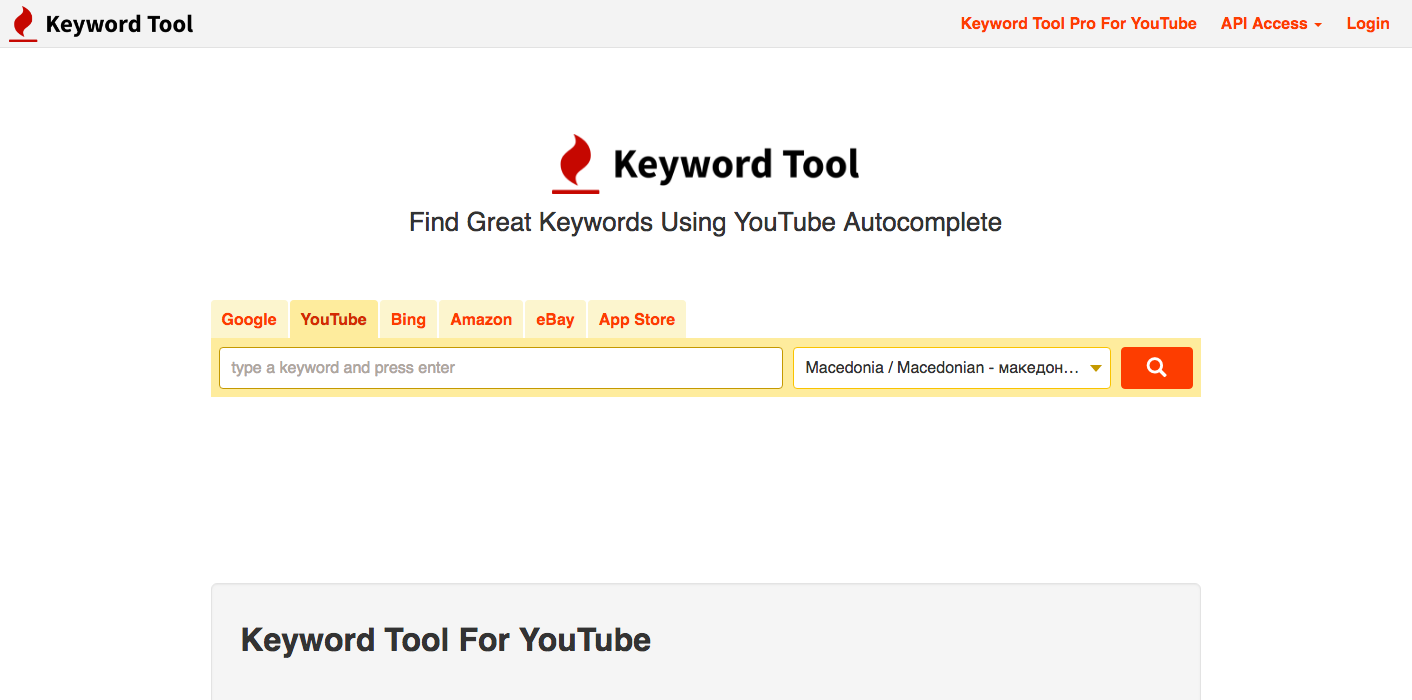
Description
The video description is the place where you say what the video is about. Its primary goal is to inform users about what to expect when they watch the video and to increase the CTR.
Write a description that is relevant to the video content and don’t forget to include your keyword. If your keyword matches the user’s search, it will automatically be emboldened in search results.
Moreover, if the first two lines of the description match the searched keyword, your chances of getting a higher ranking will increase.
The average word count for YouTube descriptions is between 300 and 500 words. Some people like adding links in their video descriptions and that’s OK, as long as the link is relevant and helps describe the video.
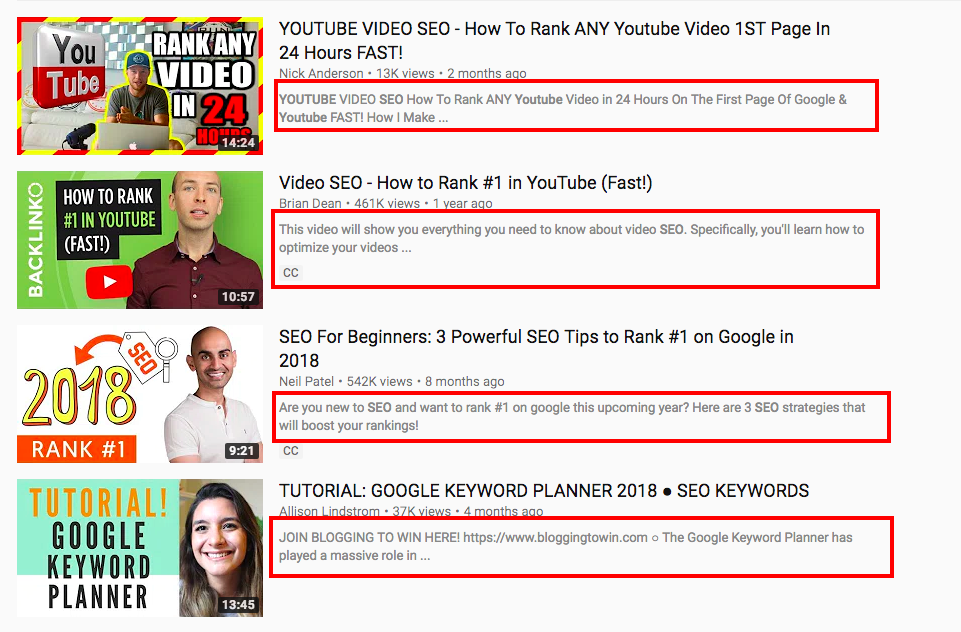
Tags
Another great way to boost your rankings in YouTube is to take advantage of tags. Make sure to add at least ten tags per video and to include your keywords.
Start with the main keyword, then continue with matching/related keywords. For this purpose, you can use tools such as TubeBuddy and TagsYouTube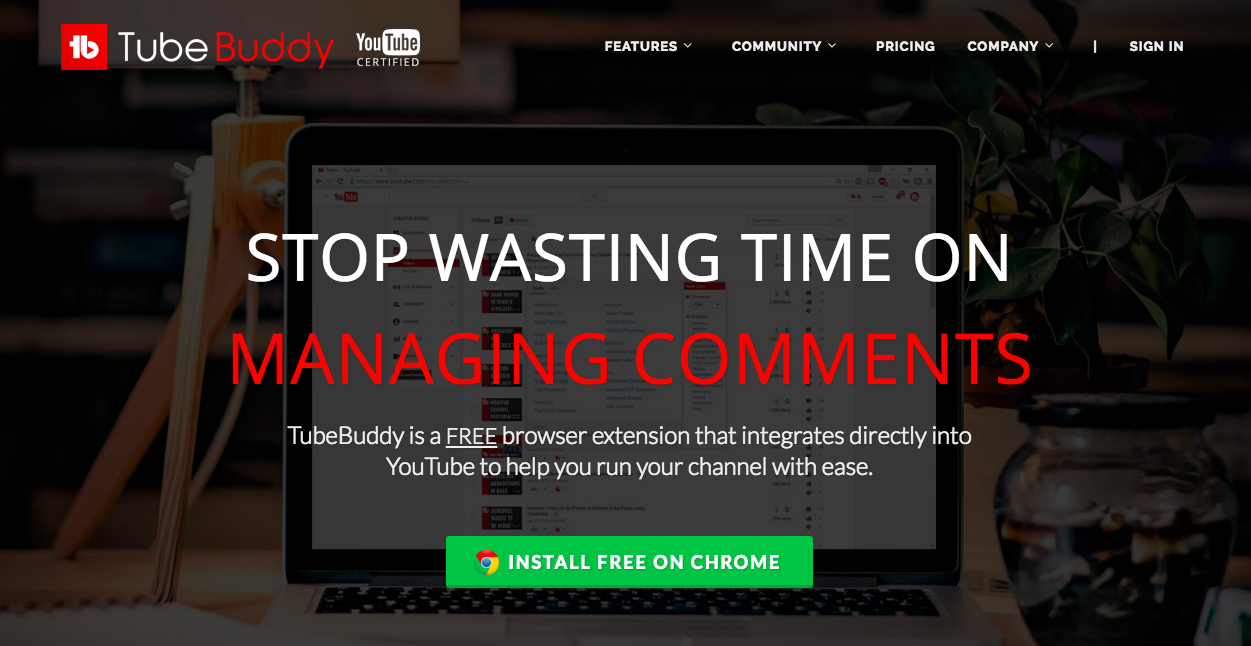
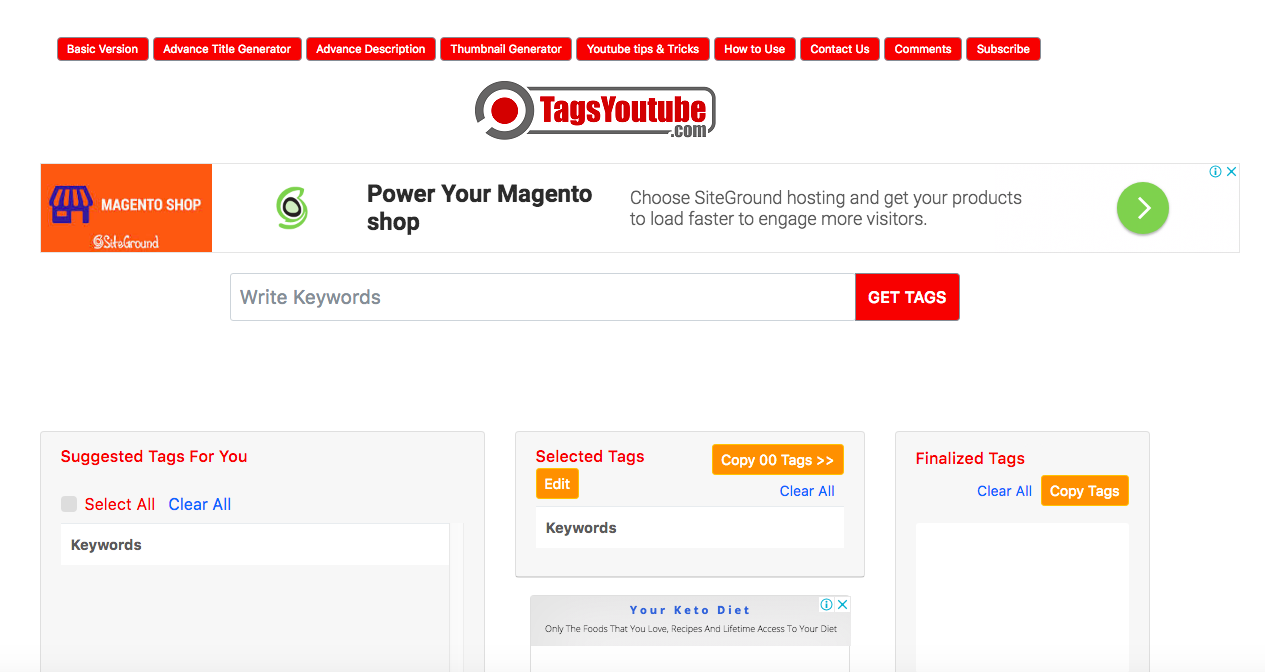
SEO experts suggest taking into consideration the misspelled varieties of your keywords. For instance, if one of your keywords is ‘YouTube SEO’, you can also put ‘TouTube SEO’ as a tag.
In addition, try singular and plural varieties; for instance, if your video is about makeup trends, use both ‘Makeup trend’ and ‘Makeup trends’. In other words, try to target as many extra (relevant) keywords as you can in order to appear in a larger number of searches.
Transcriptions
Did you know that YouTube transcribes all videos automatically? These transcriptions are then indexed and used as a ranking factor. That’s why you must make sure your keywords are included in the content.
However, be careful to incorporate the keywords naturally. If you use them well, you will be rewarded with higher rankings. If, on the contrary, you repeat the keywords without making any sense, your videos may end up penalized.
Note: YouTube’s automatic transcripts are not very good. To boost your SEO efforts significantly, try transcribing the videos yourself and upload the transcriptions as text files.
YouTube SEO Best Practices #2 – It’s All About Content
Content quality
At the end of the day, it all comes down to creating awesome videos that will attract users’ attention, i.e. videos that are fun, useful, and/or informative.
If your content is poor, people won’t watch, comment, or engage in any other way. This will send negative signals to Google and as a result, your rankings will remain low.
So, begin with creating great content and build it up from there.
Content length
When it comes to videos length, the rule of thumb is – longer videos rank better.
So how long should your videos be? There is no universal rule here. For instance, the average length of the videos ranking on the first page on YouTube is about 14-15 minutes.
However, you must first focus on your video’s quality. If the content is compelling, people won’t mind spending an hour to watch it.
Promote your YouTube content
Once you’ve optimized and posted your video, you need to get views. Promoting your channel not only increases your views, but also improves your ROI, helps you build authority, and affects your videos search rankings.
Here are some ideas to help you promote your YouTube channel:
- Create compelling YouTube thumbnails by using text overlays, brightly-colored backgrounds, close-ups of faces, etc;
- Fill in your YouTube profile with as much info as possible; make sure all brand elements (logo, colors, backgrounds) are consistent and don’t forget to include contact links;
- Use email marketing to let your audience know when you post a new video;
- Add clear CTAs to tell viewers what to do next; for instance, share the video, sign up to your email list, or subscribe to your channel;
- Use placement targeting and interest category targeting to reach new audiences. Another way to reach new audiences is to advertise your channel. For instance, you can run an AdWords campaign even if your budget is low;
- Promote your channel on your blog, as well as on social networks;
- Run contests and giveaways where you’ll give out free stuff and prizes in order to engage your audience.
YouTube SEO Tips #3 – User Engagement
When it comes to ranking your videos higher, user engagement is a very important factor. Since the publisher has no direct control over user engagement, it can be regarded as off-site SEO.
However, there are a few things video publishers can do in order to influence user engagement and take full advantage of it.
Views
The main goal when posting a video is to get views. A large number of views can also boost your SEO.
First and most important, user engagement highly depends on your content’s quality.
Next, promoting your channel by using some or all of the tactics mentioned above will certainly boost the number of views.
However, YouTube doesn’t simply count views; it takes into consideration their quality by inspecting if the users watched the video from beginning till the end. The longer your users spend watching your videos, the better the viewership quality.
You can see your audience retention rate (i.e. how long they spend watching your videos) in the Analytics section of your YouTube account.
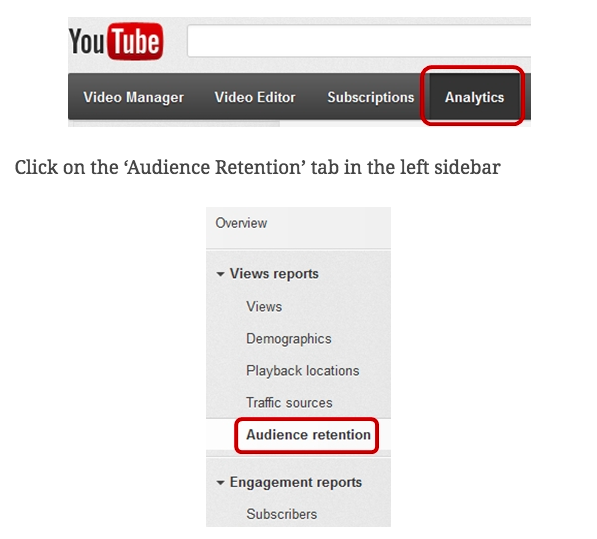
Inbound Links
YouTube, just like Google, considers inbound links a very important ranking factor. The difference here is that you need links to both your channel and your video.
Here is what you need to do in order to build links to your video and channel:
- Create high-quality videos that appeal to your audience’s emotions, be it happiness, sadness, fear, or anger. Research has shown that people most often share inspiring and touching videos.
- Share and promote. Make use of Q&A sites such as Yahoo Answers and Quora where people ask questions which you can answer by adding a link to your video. This will not only boost your views, but it will also increase your authority. Note: Make sure you add the link where relevant; if you just paste it randomly wherever you can, you may end up banned from these sites.
- Add your YouTube video/channel link on your site and blog, in your email signature, as well as on your other social media platforms. Sharing YouTube content on social networks is really easy – all you need to do is click the button and hope that your viewers will do the same.
Likes and comments
Nothing signals user engagement better than likes (thumbs up)/dislikes (thumbs down), favorites, and comments.
When you upload a video, your goal is to gain as many thumbs up as possible, but SEO experts agree that even bad publicity (lots of thumbs down) is better than no publicity at all.
The best and easiest way to start this process is to ask your friends to share your video on their social media, then hit the like or favorite button and leave a comment or question.
When it comes to comments, be really careful – YouTube easily detects fake and spammy comments and if you try to do this, you might end up penalized.
To increase the number of comments, be the first that reaches out to your audience. Ask them how they like your video or to subscribe to your YouTube channel. Be sure to give a feedback to every single comment, be it negative or positive.
Another tactic you can utilize are video responses. Although rare, video responses indicate that people really liked your video, which sends SERPs a powerful signal of user engagement.
Conclusion
When it comes to ranking your YouTube videos, the first thing to focus on is creating interesting content. Next, make sure to optimize all your videos around the most relevant keywords.
When creating the videos, always have your target audience in mind and don’t forget to ask them to engage by commenting, sharing, and liking.
Do you know any other YouTube SEO tips? Feel free to share them in the comments below.

